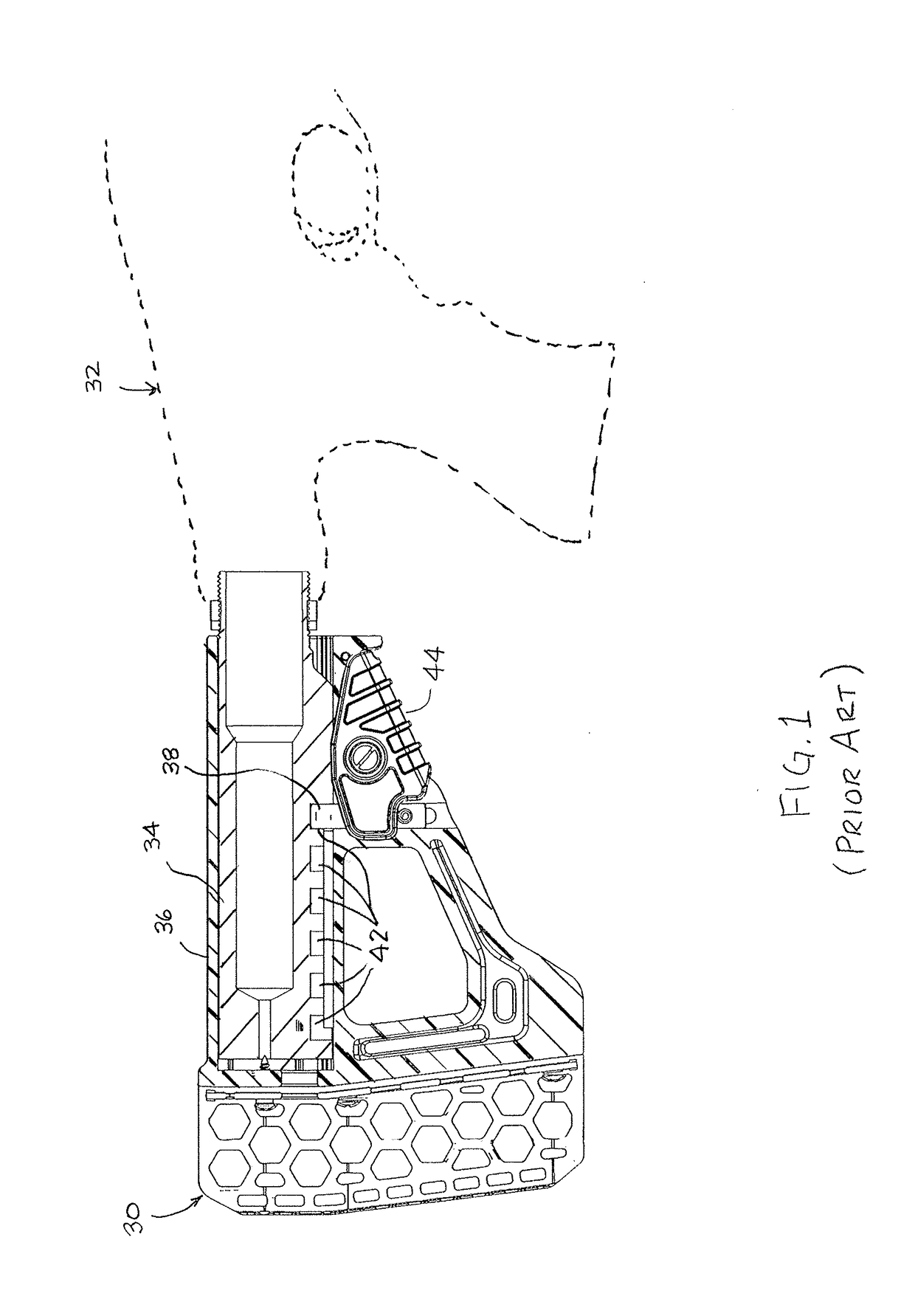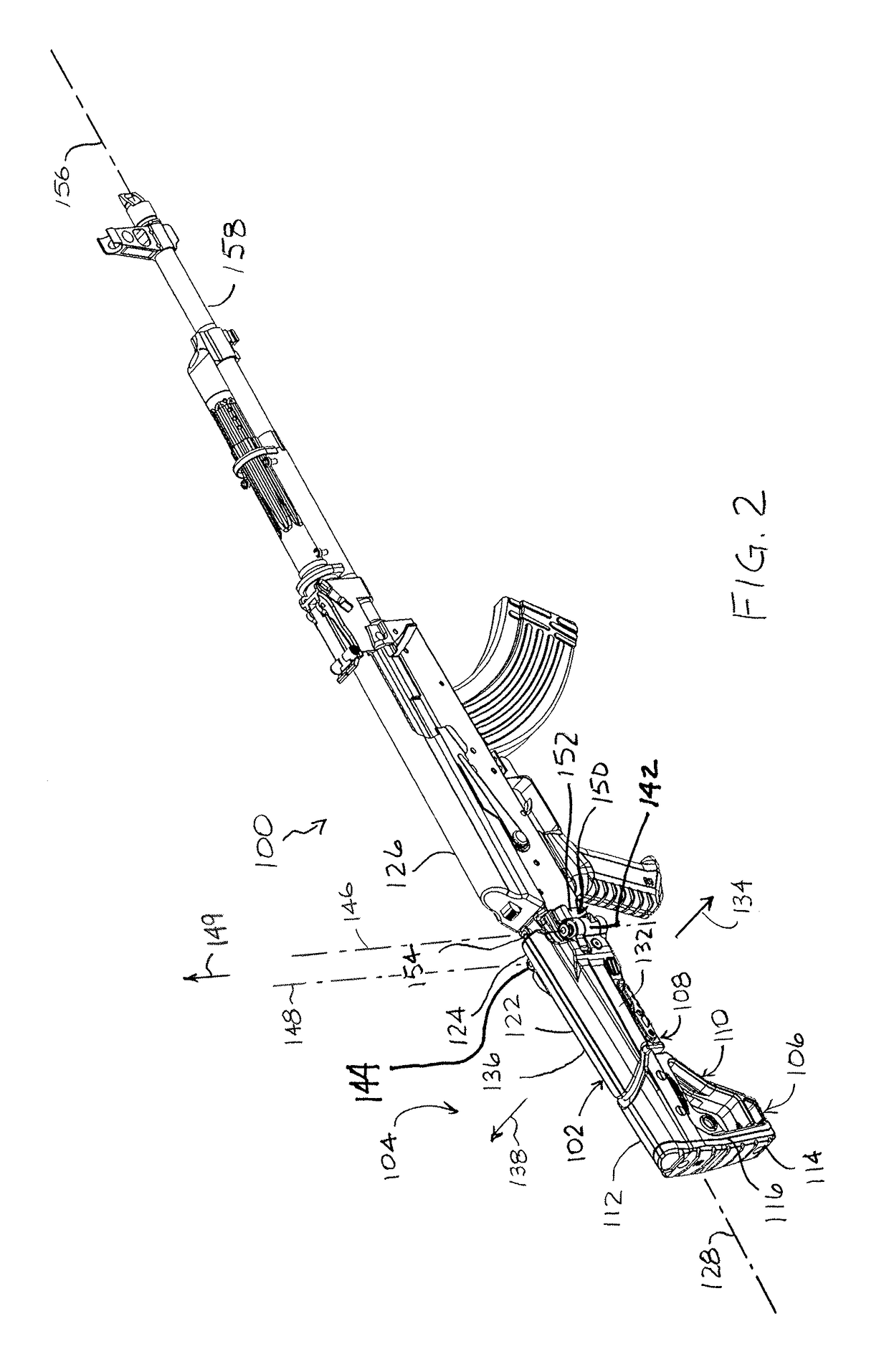Adjustable length bi-directional folding stock for firearm
- Summary
- Abstract
- Description
- Claims
- Application Information
AI Technical Summary
Benefits of technology
Problems solved by technology
Method used
Image
Examples
Embodiment Construction
[0036]Referring to FIG. 1, a conventional adjustable stock 30 mounted to a receiver 32 is depicted. The conventional adjustable stock 30 includes an adjustment tube 34 over which a housing 36 can be translated. The adjustment tube 34 is held in within the housing 36 by a set pin 38, the set pin 38 being biased toward engagement with a plurality of pockets 42. A lever 44 is mounted to the housing 36 for actuating the set pin 38 to selectively retract the set pin 38 from engagement with one of the plurality of pockets 42 defined in the adjustment tube 34. The housing 36 is thereby enabled for translation with respect to the adjustment tube 34. The adjustment tube 34 is mounted in fixed relation with the receiver 32. The housing 36, upon which the lever 44 is mounted, is moveable relative to the receiver 32.
[0037]To adjust the conventional adjustable stock 34, the user grips the receiver 32 with one hand and grips the conventional adjustable stock 30 at the lever 44 with the other hand...
PUM
 Login to View More
Login to View More Abstract
Description
Claims
Application Information
 Login to View More
Login to View More - R&D
- Intellectual Property
- Life Sciences
- Materials
- Tech Scout
- Unparalleled Data Quality
- Higher Quality Content
- 60% Fewer Hallucinations
Browse by: Latest US Patents, China's latest patents, Technical Efficacy Thesaurus, Application Domain, Technology Topic, Popular Technical Reports.
© 2025 PatSnap. All rights reserved.Legal|Privacy policy|Modern Slavery Act Transparency Statement|Sitemap|About US| Contact US: help@patsnap.com



